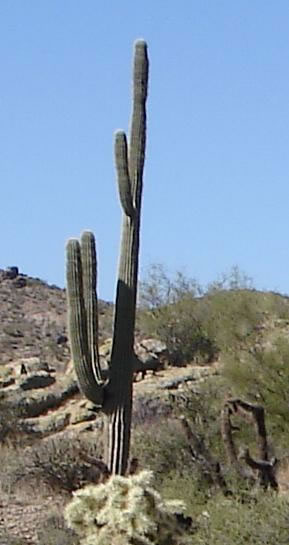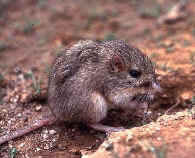A desert is a region that has a very low level of precipitation. In general, a region on Earth is considered a desert if it has less than 250 millimeters of precipitation a year.
Some deserts receive even less precipitation than that.
The Atacama Desert in Chile, the Earth’s driest desert, may receive 1 millimeter of rain every 5 to 20 years.
All deserts lose more water through evaporation than they gain through precipitation.
About one third of the land on our planet is desert. The amount of desert on Earth is increasing as semi-dry regions suffer the effects of human activity. Crops and grazing animals degrade the soil, which exacerbates the effects of wind and water erosion. The conversion of semi-dry land to desert is known as desertification.
While we often think of deserts as being hot and close to the equator, deserts can be cold and can exist in the mid latitudes or near the poles. There are cold deserts in high mountains.
In fact, the largest desert on Earth is in Antarctica.
In the desert, day and night temperatures vary greatly. This is because the dry desert air does not retain heat very well. Therefore, heat that builds up during the day is lost rapidly at night
Despite harsh conditions, deserts support life. More than one sixth of the people on Earth live in deserts.
Many other animals, as well as plants, have adapted to desert conditions and are able to go without water for a long time.
Some desert animals and desert plants have waxy coatings that help reduce water loss.
Desert animals are often most active at night, when they can avoid the harsh daytime sun. They often live in burrows.
Some animals that live in the desert have specialized kidneys that reduce water loss.
Desert animals tend to have slender bodies. This makes it easier for them to lose heat.
Plants in the desert store water in their stems.
Since plants lose water through their leaves, desert plants often have no leaves. Instead, photosynthesis takes place in the stem.
The leaves of desert plants may have evolved to become spines, which are used for protection. Desert plants tend to grow more slowly than plants in more humid climates; therefore, they have a greater need for protection against predators.
Some desert plants have roots that extend far underground to reach water far beneath the soil. Others have roots that spread widely above the desert ground, so that they can soak up water whenever it rains.
Types of Deserts
Mid Latitude Deserts
Mid-latitude deserts are found in the interiors of continents. They receive little precipitation because of their distance from the ocean.
The Taklamakan Desert of China, the Gobi Desert of China and Mongolia and the American desert in Arizona, New Mexico, Nevada and Southern Utah are mid-latitude deserts.
During the day, it is warm in summer and cold in winter. Daytime temperatures can drop below freezing in winter.
When it rains in mid-latitude deserts, the rain is heavy but doesn't last very long. Rather than sinking into the soil, a large portion of the water simply runs off.
 Desert plants are widely spaced. Their roots spread out far from their stems.
Desert plants are widely spaced. Their roots spread out far from their stems.
Roots soak up water quickly when it rains. The plants then store water in their tissues.
The thick stems of cacti hold large amounts of water.
Most plants have small leaves or no leaves. Many have spines or thorns.
There are few large herbivores.
Many rodents, most of which are burrowers, live in mid-latitude deserts. They get water from their food or from dew.
 Some, such as pocket mice, are able to use the water that is produced when the food in their bodies is broken down.
Some, such as pocket mice, are able to use the water that is produced when the food in their bodies is broken down.
Coyotes, hawks and rattlesnakes prey on rodents and rabbits.
Birds, lizards and scorpions eat insects.
Trade Wind Deserts
Trade wind deserts are what we usually think of when we think of deserts. They are located near the equator, between 30 degrees North latitude and 30 degrees south latitude, and are sometimes known as tropical or subtropical deserts.
Trade winds blow from the east, from higher latitudes to the tropics. When these air masses reach the tropics, they heat up, bringing dry air to the region.
The trade winds also blow clouds away. Because of this, more sunlight reaches the land during the day. Because there are no clouds to store heat, heat dissipates very quickly at night. This means that it is much hotter during the day than it night.
During the day, temperatures in the Sahara in Africa, the world’s largest trade wind desert, have reached 134 degrees Fahrenheit (57 degrees Celsius).
The Simpson Desert in Australia is another example of a trade wind desert.
Rain Shadow Deserts
Rain shadow deserts form on the leeward sides of mountains. When air moves upward along the windward side of a mountain, it cools. Because cool air cannot hold as much moisture as warm air, it rains on the windward side. Water vapor never reaches the leeward side, so the land on that side of the mountain becomes very dry.
Death Valley in the United States is a rains shadow desert. It is located on the leeward side of the Sierra Nevada Mountains, in Nevada and California.
Coastal Deserts
Coastal deserts are located on continental coasts. Ocean currents running near the coast create fog and high levels of humidity. However, it almost never rains.
The fog in coastal deserts blocks radiation from the sun.
Coastal deserts have temperatures that range from cool to moderately warm. They have short, cool winters and long, warm summers.
The Atacama Desert is a coastal desert, as is the Namib, in Africa.
Coastal deserts have cool winters and long, warm summers.
Polar Deserts
Polar deserts are cold deserts located in the Antarctic and the Arctic.
In addition to the Antarctic Desert , there are deserts in Alaska, Greenland and Iceland.
While we often associate deserts with sand dunes, structures of sand that have been shaped by the wind, polar deserts often have snow dunes.
Water in polar deserts may freeze and melt throughout the year, leaving patterns on the ground.
Desert Features
There are three major types of desert landscape: reg, hamada and erg.
Reg is a large, flat area strewn with gravel and small stones. Hamada contains desolate areas of bare rock. The erg, or sandy desert, which is characterized by sand dunes, is the most commonly known desert landscape.
Erg covers about 20 per cent of all the deserts in the world.
Sand Dunes
The sand dune is one of the man features of erg landscapes.
The wind deposits these mounds of sand in the desert and shapes them.
Sand dunes also exist in sandy coastal areas.
One type of dune, the barchan, is crescent-shaped, with two long, curved arms pointing in the direction of the prevailing wind.
Another type, the seif (from the Arabic word for sword) dune, is a long ridge of sand which develops parallel to the wind direction.
The smallest dunes are merely ripple marks, but some are hundreds of meters high. They can move at a rate of about 10 meters a year.
Flash Floods
Occasionally, thunderstorms cause flash floods in deserts.
Torrents sweep along gorge-like channels called wadis. This causes temporary lakes, called shotts (sometimes spelled chotts), to be formed in the mountains.
These flash floods have enormous erosive power.
After such a flood, dormant plants spring to life, often scattering their seeds only two weeks after flowering.
For a short time, the desert is alive with color.
Loess Deposits
Loess is a type of aeolian, or wind-blown, deposit.
It is a yellowish, fine-grained material made up of dust that usually originates in deserts.
A vast belt of loess stretches from Germany and France, where it is thin and glacial in origin, across northern Europe and Asia, to China, where it is derived from desert erosion.
The loess layers in China are very thick. The yellow color of the Hwang Ho comes from the loess that it transports.
Loess deposits can also be found in the Great Plains of the United States.
Oases
An oasis is a fertile area in the desert, characterized by the existence of date palms. Oases can range from small water holes, where an underground aquifer meets the surface, to an area is large as the Nile valley in Egypt
Most human settlements in the desert were founded around oases.